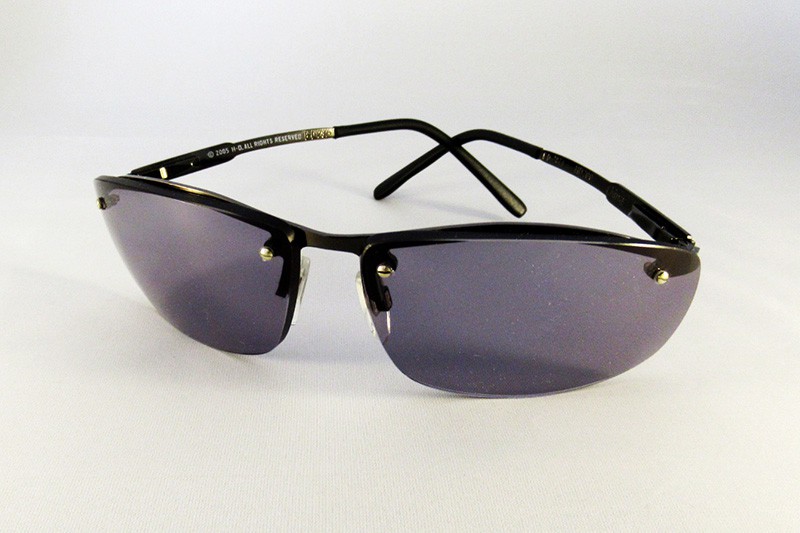When it comes to driving, especially during challenging conditions such as night driving or bright, sunny days, having the right lens coatings on your glasses is essential. The correct lens coatings not only improve visibility but also enhance safety and comfort on the road. Whether you’re driving during the day or wearing night driving glasses at dusk, specialized coatings can significantly reduce glare, alleviate eye strain, and improve your overall driving experience.
Let’s explore the different types of lens coatings available, how they can benefit drivers, and which ones are best suited for your driving glasses.
Different Types of Lens Coatings for Driving
Anti-Reflective Coating
One of the most important coatings for drivers is an anti-reflective coating. This coating works by eliminating reflections on the surface of the lens, which can help reduce glare from oncoming headlights or streetlights during night driving. Without this coating, drivers may experience distracting light reflections on their lenses, which can impair vision and cause eye strain. An anti-reflective coating allows more light to pass through the lens, improving overall visibility, especially in low-light conditions.
Polarized Coating
Polarized coatings are designed to minimize reflections from surfaces like roads, car hoods, and other vehicles. By filtering out horizontal light waves, this coating reduces bright reflections and glare, making it an ideal choice for daytime driving. For individuals driving in bright or wet conditions, polarized lenses can help by reducing the intense reflections that often occur on the road, giving you clearer vision and reducing the likelihood of accidents. Polarized coatings are particularly beneficial for people who are sensitive to light or experience discomfort from glare while driving.
UV Protection Coating
Long-term exposure to the sun’s UV rays can damage your eyes, just like it can harm your skin. For this reason, a UV protection coating is crucial for drivers who spend a lot of time on the road during the day. This coating acts like sunscreen for your eyes, filtering out harmful ultraviolet rays. With proper UV protection, you can shield your eyes from damage and maintain better visual health over time. While UV protection doesn’t directly affect your driving experience, it does ensure your long-term eye health and is a vital component of any pair of driving glasses.
Blue Light Coating
Though commonly associated with reducing eye strain caused by digital screens, blue light coatings are increasingly popular for drivers, especially those who experience eye strain after long hours behind the wheel. Blue light emitted by LED headlights or streetlights can contribute to discomfort and fatigue. A blue light coating filters out this type of light, reducing discomfort while driving at night.
How Lens Coatings Improve Visibility and Reduce Eye Strain
Using the right combination of lens coatings can drastically improve your visual clarity while driving. Night driving glasses, equipped with an anti-reflective and blue light filter, can offer clearer vision in dimly lit environments. These coatings help reduce the glare from headlights and other bright lights, which can be particularly distracting and potentially dangerous during night driving.
Additionally, drivers who experience fatigue from long hours behind the wheel will benefit from polarized and anti-reflective coatings, as these coatings help reduce glare and minimize eye strain.
For people who require progressive lenses—those that correct both near and far vision—coating options can be particularly helpful. Since progressive lenses are already designed to transition smoothly between different focal lengths, having coatings like anti-reflective or polarized treatments will further optimize the wearer’s ability to focus on the road and dashboard without being distracted by glare or reflections.
Key Features to Look for in Driving Lens Coatings
When selecting the best lens coatings for driving, it’s essential to consider how each feature enhances your driving experience. Below are the key attributes to look for.
Anti-Reflective Coatings to Reduce Glare
An anti-reflective coating is one of the most crucial features for driving lenses. It reduces glare from external light sources such as headlights, streetlights, and even the sun reflecting off your dashboard. Without this coating, light can bounce off the surface of the lenses, creating distracting reflections. This is particularly important for night driving, where glare from headlights can impair your ability to see clearly. By reducing these reflections, anti-reflective coatings ensure that more light passes through the lens, improving your overall clarity and comfort on the road.
Polarized Lenses for Reducing Reflections
Another critical feature in driving lenses is polarization. Polarized lenses are designed to cut down reflections and glare that bounce off horizontal surfaces like wet roads, car hoods, and other vehicles. This is especially useful in bright sunlight or after rain when the sun’s rays can cause intense glare on the road. Polarized lenses minimise these reflections, providing you with a clearer, crisper view of your surroundings. This feature is ideal for daytime drivers who experience glare discomfort during bright conditions.
UV Protection to Shield Your Eyes from Sunlight
UV protection is essential for those who frequently drive in bright sunlight. The sun’s harmful UV rays can lead to long-term damage to your eyes, contributing to conditions like cataracts or macular degeneration. By selecting a coating that includes UV protection, you are safeguarding your vision and ensuring your eyes remain healthy over time. While this feature may not directly impact visibility, it is a crucial consideration for preserving your eyesight during extended periods of driving.
When to Get an Eye Exam for Your Driving Glasses
If you frequently experience eye strain or difficulty focusing while driving, especially at night, it might be time to get an eye exam. Your prescription lenses may need to be adjusted, or you might benefit from specialised coatings that enhance your vision while on the road. Progressive lenses, for example, offer a versatile solution for individuals who need to correct both near and far vision, and pairing them with anti-reflective coatings can help reduce distractions.
Comparing Popular Lens Coatings for Driving
There are several different lens coatings available today, each offering unique benefits. Let’s take a closer look at some of the most popular coatings designed to enhance vision while driving.
Anti-Reflective Coating
One of the most essential coatings for both day and night driving is an anti-reflective coating. This coating is designed to minimise reflections from headlights, streetlights, and other bright light sources. It also helps reduce glare, which can be particularly problematic during night driving.
- Pros: Helps improve visibility by reducing reflections, making nighttime driving more comfortable. Reduces eye strain caused by glare.
- Cons: Slightly increases the cost of the lenses.
- Cost Considerations: Anti-reflective coatings are typically an affordable upgrade and are widely recommended for driving glasses.
Blue Light Blocking Coating
Although commonly associated with screen use, blue light can also be an issue while driving, especially at night. Headlights, streetlights, and even car dashboard screens emit blue light, which can contribute to eye strain and fatigue.
- Pros: Reduces exposure to blue light, preventing eye fatigue and strain, particularly during nighttime driving. Can also be helpful for drivers who spend long hours on the road.
- Cons: Some users report a slight tint to their vision, which may take getting used to.
- Cost Considerations: Slightly more expensive than standard coatings, but the benefits for eye comfort can be worth it.
Polarized Coating
Polarized lenses are another great option for reducing glare during daytime driving, particularly in bright sunlight or snowy conditions where glare is amplified. However, it’s important to note that polarized lenses aren’t ideal for night driving, as they can reduce visibility in low-light conditions.
- Pros: Excellent for daytime driving; reduces glare from reflective surfaces like water or snow.
- Cons: Not recommended for night driving, as they can make it harder to see in the dark.
- Cost Considerations: Polarized lenses are often pricier, but their benefits for daytime driving make them a worthwhile investment if you spend a lot of time on the road.
Photochromic Coating
Photochromic lenses, also known as transition lenses, darken when exposed to sunlight and clear up indoors or in low-light environments. This makes them a versatile option for drivers who need glasses both during the day and night.
- Pros: Adapts to changing light conditions, making them convenient for all-day wear.
- Cons: While helpful for daytime driving, photochromic lenses don’t darken as much inside a car, as they require direct UV light to activate. For night driving, they remain clear, offering no added benefit.
- Cost Considerations: These lenses are generally more expensive, but their versatility can justify the cost.
Progressive Lenses for Driving
For drivers who require multifocal lenses, progressive lenses offer a smooth transition between distance, intermediate, and near vision. This is especially helpful when switching focus between the road and the car’s dashboard.
- Pros: Great for people who need both distance and near correction without the need for multiple pairs of glasses.
- Cons: There is a slight learning curve for new users when adjusting to the different vision zones.
- Cost Considerations: Progressive lenses tend to be more expensive than single-vision lenses, but their functionality makes them highly convenient for drivers.
How to Choose the Best Lens Coating for Your Needs
Choosing the best lens coating for driving depends on a number of factors, including the time of day you typically drive, your lifestyle, and your specific vision needs.
Considerations Based on Driving Conditions
If you primarily drive during the day, polarized lenses might be your best bet, as they significantly reduce glare from the sun and reflective surfaces. However, for night drivers, polarized lenses aren’t recommended. Instead, you might want to opt for anti-reflective coating or blue light filtering lenses, both of which improve visibility and reduce glare in low-light conditions.
If you drive at all hours of the day, photochromic lenses offer flexibility, as they adjust to light conditions without needing to switch between sunglasses and regular glasses. Just keep in mind that they won’t darken fully inside your car.
For those who frequently experience night vision problems, night driving glasses equipped with an anti-reflective coating will greatly enhance your ability to see clearly in dark conditions. They help to reduce the glare from headlights and streetlights that can make night driving difficult.
Personal Preferences and Lifestyle Impacts
Personal comfort should be a major consideration when choosing lens coatings. If you’re sensitive to glare or often experience eye strain, an anti-reflective or blue light blocking coating is essential. On the other hand, if you often switch between indoor and outdoor environments, photochromic lenses might be a better fit.
Progressive lenses are ideal for those who need multiple vision corrections (e.g., reading and distance vision) while driving. These lenses allow you to view both the road and your dashboard without needing to change glasses, providing a seamless driving experience.
Recommendations for Specific Driving Scenarios
- For day driving: Polarized or photochromic lenses with an anti-reflective coating are the top choices. Polarized lenses offer excellent glare reduction from the sun, while photochromic lenses adapt to changing light conditions.
- For night driving: Anti-reflective coatings, night driving glasses, and blue light blocking lenses are ideal to reduce glare and enhance night vision. These coatings are designed to handle low-light conditions, making it easier to drive in the dark.
Regardless of your driving conditions, make sure to schedule regular eye exams to ensure your vision is at its best. Keeping your prescription up to date and choosing the right coatings for your lenses can make a significant difference in your driving safety and comfort.
Conclusion
Whether you’re driving during the day or at night, selecting the right lens coating can significantly enhance your visibility and comfort on the road. From anti-reflective coatings that reduce glare during night driving to blue light filters that help prevent eye strain, there’s a tailored solution for every driving scenario. For those needing prescription glasses, progressive lenses offer a seamless experience, managing both distance and near vision effortlessly.
If you’re dealing with glare or poor vision while driving, consider upgrading your lenses. Regular eye exams and the right coatings can ensure your driving glasses meet your specific needs.
For a high-quality lens replacement or reglazing service, check out Reglaze 4 U. They offer a range of options, including single vision lenses, bifocal lenses, and varifocal lenses, with a specialisation in reglazing Oakley and wrap-style frames. Contact them at 0116 367 6015 or email info@reglaze4u.com to explore their services and breathe new life into your glasses. Make sure your lenses are as road-ready as you are!





